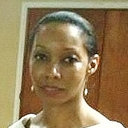Aicardi syndrome associated with anterior cephalocele in a female infant.
Klíčová slova
Abstraktní
Aicardi syndrome is a triad of abnormalities that includes total or partial agenesis of the corpus callosum, chorioretinal lacunae, and infantile spasms. This syndrome was first described in 1965. A female infant with Aicardi syndrome associated with a nasoethmoidal cephalocele is described in this report. She presented with a history of unilateral nasal discharge since birth and seizures since age 1 week. She was microcephalic and there was visual impairment. A fleshy mass of the left nostril was noted. Ophthalmological evaluation revealed left exotropia, dysplastic optic discs and retina, 'morning glory' appearance of the left optic disc, and bilateral chorioretinal lacunae. Magnetic resonance imaging of the brain showed absence of the corpus callosum, dysmorphic changes of the lateral ventricles, a superiorly located third ventricle, heterotopic grey matter of the frontal lobes, a left nasoethmoidal cephalocele, and closed lip schizencephaly of the left frontal lobe. This female infant developed asymmetric infantile spasms at age 8 weeks. Surgical correction of the cephalocele was declined. She developed recurrent pneumonias secondary to aspiration of feeds and died at age 8 months during one of these events.


